Russian Constructivism
Russian Constructivism was a design and architectural movement that started in Russia in 1914 which embodied half politics and half aesthetics. They favoured the machine as the source of universal progress having a social purpose rather than art for its art’s sake.
From a stylistic point of view constructivism was defined by flat and symbolic colours like red or grey and combinations of different sans serif type faces. Abstract was organised, using geometrical forms to create dynamic or visually stable forms. The process of getting the message across was photography and photomontage which was used as opposed to illustrations.
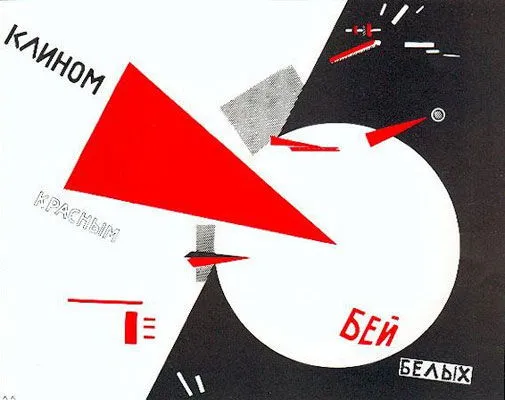
Figure 1. El Lissitzky Beat the Whites with the Red Wedge 1919
The idea of Constructivism was to demonstrate how the materials behaved- question the difference between wood, glass and metal which would dictate the form an artwork would take. For some this meant the translation of ideas and design into mass production, for others meant a new modern style expressing the dynamism of modern life.
The investigation of material, volume, and construction made it possible for us in 1918, in an artistic form, to begin to combine materials like iron and glass, the materials of modern Classicism, comparable in their severity with the marble of antiquity. In this way, an opportunity emerges of uniting purely artistic forms with utilitarian intentions…The result of this are models which stimulates us to inventions in our work of creating a new world, and which call upon the producers to exercise controls over the forms encountered in our everyday life.
(Constructivism – Concepts & Styles, n.d.)
The main artists of this movement were: El Lissitzky, Aleksander Rodchenko, Varvara Stepanova, Gustav Klutsis, Valentina Kulagina and Stenberg Brothers.
El Lissitzky made a career using art for social change. All his abstract work had a political message behind. Though his style was made from rudimentary shapes and colours, he made a strong impression on ideas like communality and egalitarianism. He used primary colours, black and white text and basic forms to tell stories, including traditional Jewish tales.
“The artist constructs a new symbol with his brush. This symbol is not a recognisable form of anything which is already finished, already made, already existing in the world – it is a symbol of a new world, which is being built upon and which exists by way of people.”
El Lissitzky
(Constructivism – Concepts & Styles, n.d.)
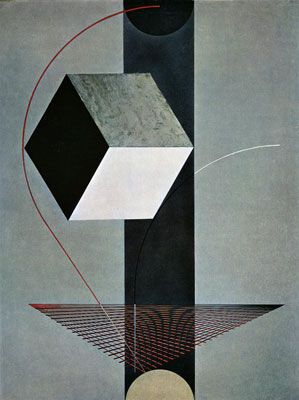
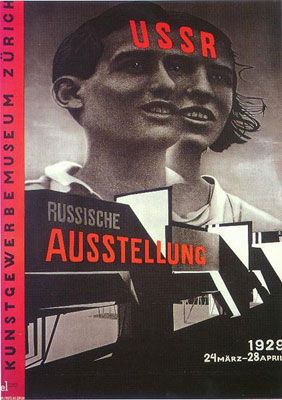
Aleksander Rodchenko is one of the most important avant-garde artist who used his art in the service of political revolution. His life-work was a never-ending experiment from painting and sculpture to graphic design and photography. His work included book covers, magazines, posters, photo-montage and illustration, set and costumed design for Russian theatres and even aircraft hangar. His influence spread across the early 20th century being impossible to narrow down the vast reaches of the ideology that he helped.
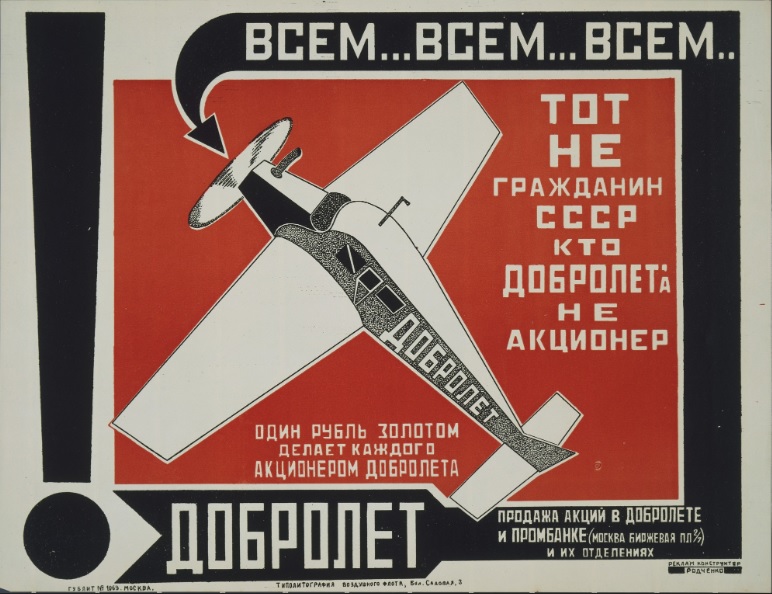
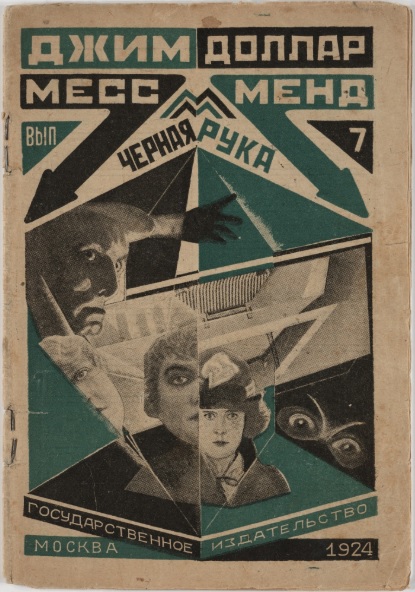
Varvara Stepanova believed that real artwork was made in the streets, factories and laboratories. In 1921 she co-founded the Constructivist Group which explored the artist’s efforts to design functional yet beautiful products for everyday life. She produced photo-montage, book covers, posters and theatrical sets before choosing designing fashion as her vision to express further. Her clothes designs were defined by dynamic shapes with sharp angular forms, printed abstract patterns and contrasting colours: bold reds and blacks. She dedicated her working life to create change within the society and influenced all modern day graphic designers to raise the standard.
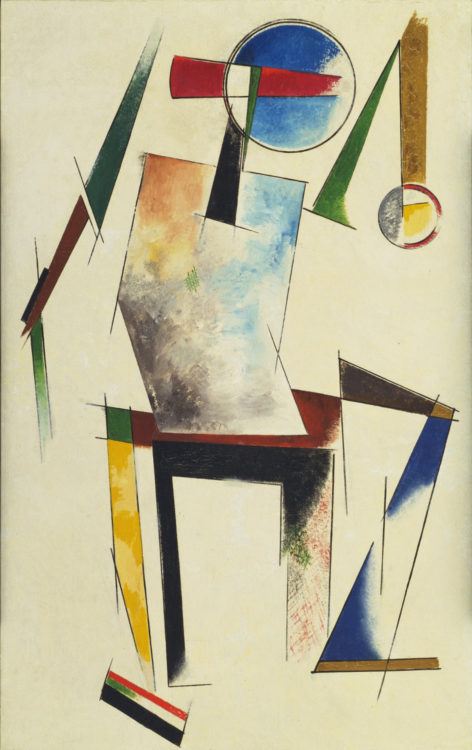
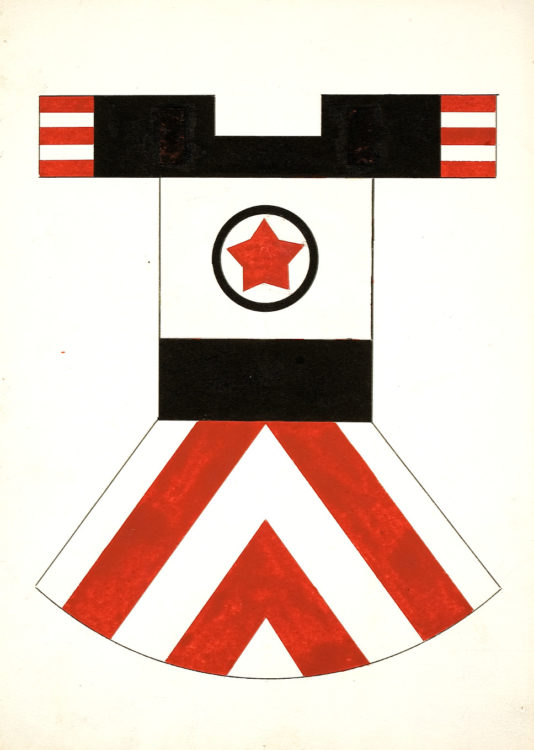
Gustav Klutsis was one of the pioneers of photo montage. He designed political posters, book covers, newspapers and magazine illustrations. He was an art teacher, photographer and graphic designer. He developed his own individual method of combining slogans and functional structures.

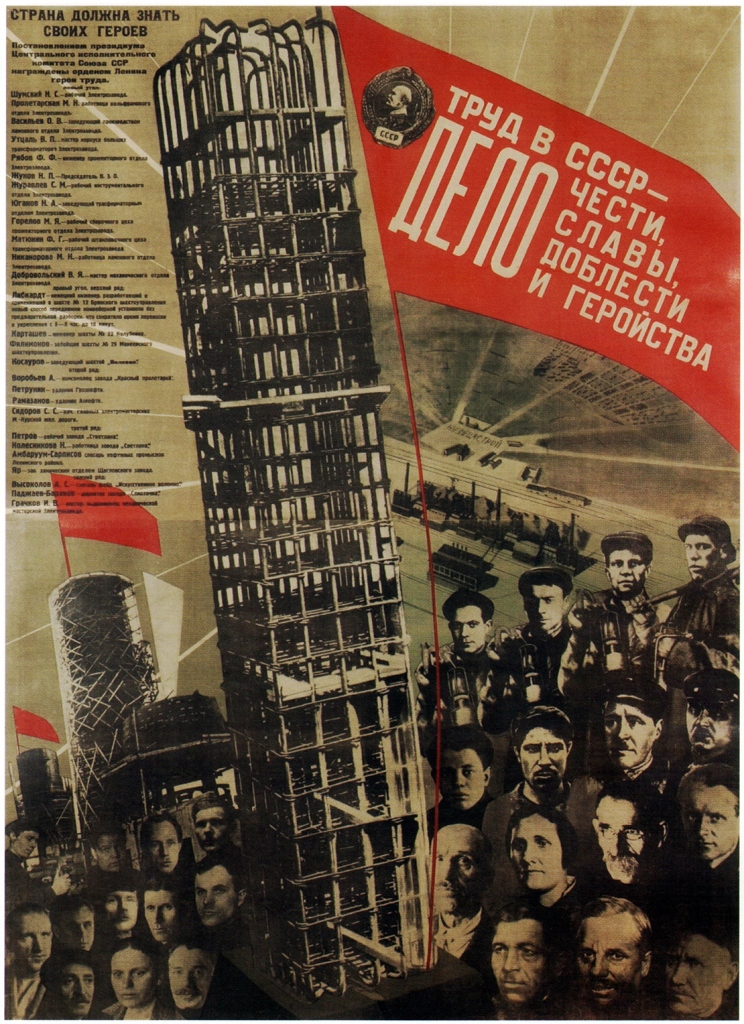
Stenberg Brothers created some of the most visually cinematic graphics in 1920. Their use of acid colours, fractured planes and distorted perspectives made some complex and captivating designs. From a stylistic point of view they assembled images into new collages. What made their work remarkable were their dynamic and innovative layouts accomplished by the use of montage. They used a projection machine which blow-up or distort the images for effect. This allowed them to create hand-drawn at a large scale of film stills that retained the appearance of photo montage.
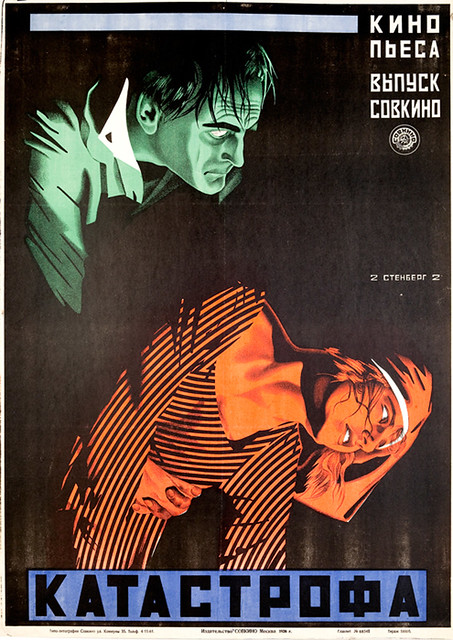
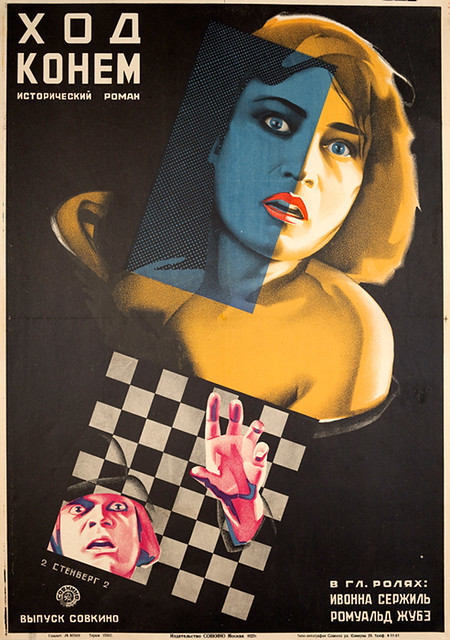
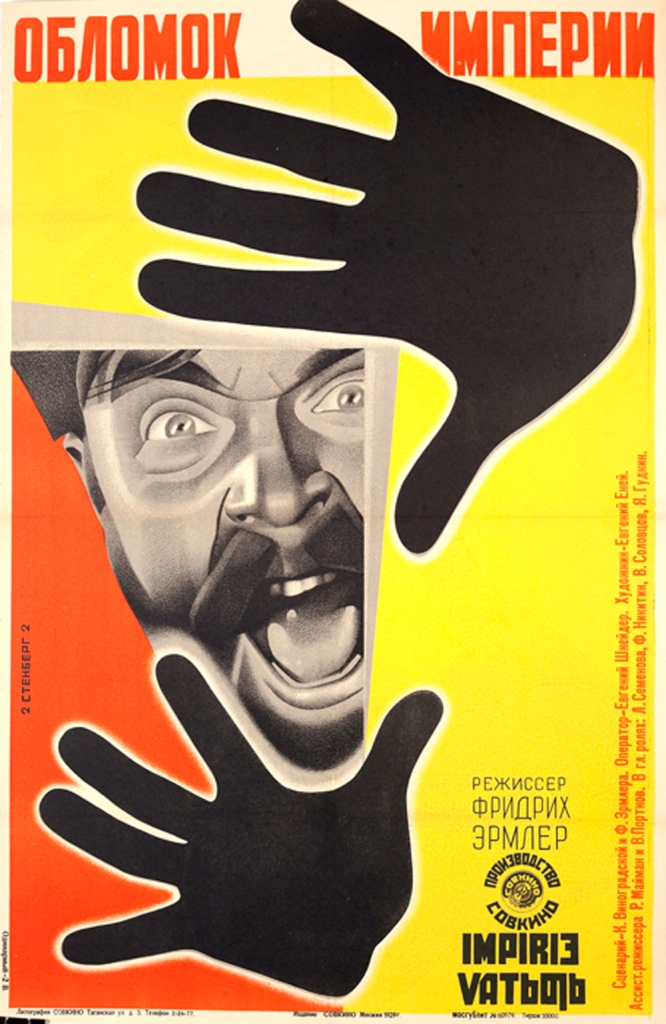
Contemporary Influence
The movement flourished in Europe and became an inspiration to Western artists and designers.
“Rodchenko’s mentor, Wassily Kandinsky, taught at the Bauhaus art and design school in Germany after leaving Moscow in 1922, as did the Hungarian Constructivist Laszlo Moholy-Nagy. Their ideas were then disseminated by fellow Bauhaüslers when they fled from Nazi Germany in the 1930s to teach at Yale, Harvard, Black Mountain and other American schools.”
(Rawsthorn, 2009)
The legacy that left behind was the style being reinvented with the famous posters from Saul Bass for “Vertigo” and “Psycho” in 1950 and other movies from Alfred Hitchcock. But the movement was even more influential than that. You can see echoes
“for mixing media in the work of European designers, such as M/M (Paris) and Martino Gamper” or you can see it in the creation of digital imagery.” The “viz” phenomenon owes more to Soviet Constructivism than its academic pedigree. When Rodchenko and Popova designed posters and pamphlets for the Soviet state, they were trying to help a confused and largely illiterate population to make sense of the dramatic changes in their daily lives. New laws. New institutions. New working practices. New expectations. New taboos. Their striking collages must have looked as exhilarating to 1920s workers as luscious digital visualizations do to us today, and shared the same aim of helping people to make sense of the complexity of modern life.”
(Rawsthorne, 2009)
Looking at the poster that Matthieu Bourel designed for the article called “Is It Time to Call Trump Mentally Ill?” in 2017 I see a lot of similar characteristics to Constructivism movement. There is photomontage present, very nice layered indicating I presume Trump’s state of mind at that moment. There are two colours present: grey and orange. In Constructivism red was the colour that was representative but here orange is used to draw attention. The theme is political which defines the movement. There is no type but I believe the message is very straightforward. Everything is clean and organised even though there is no dynamic. The background is simple, drawing a line at the bottom and mixing the colours to draw the viewer’s attention to the 4 people staring at Trump looking as if they are trying to make a decision.
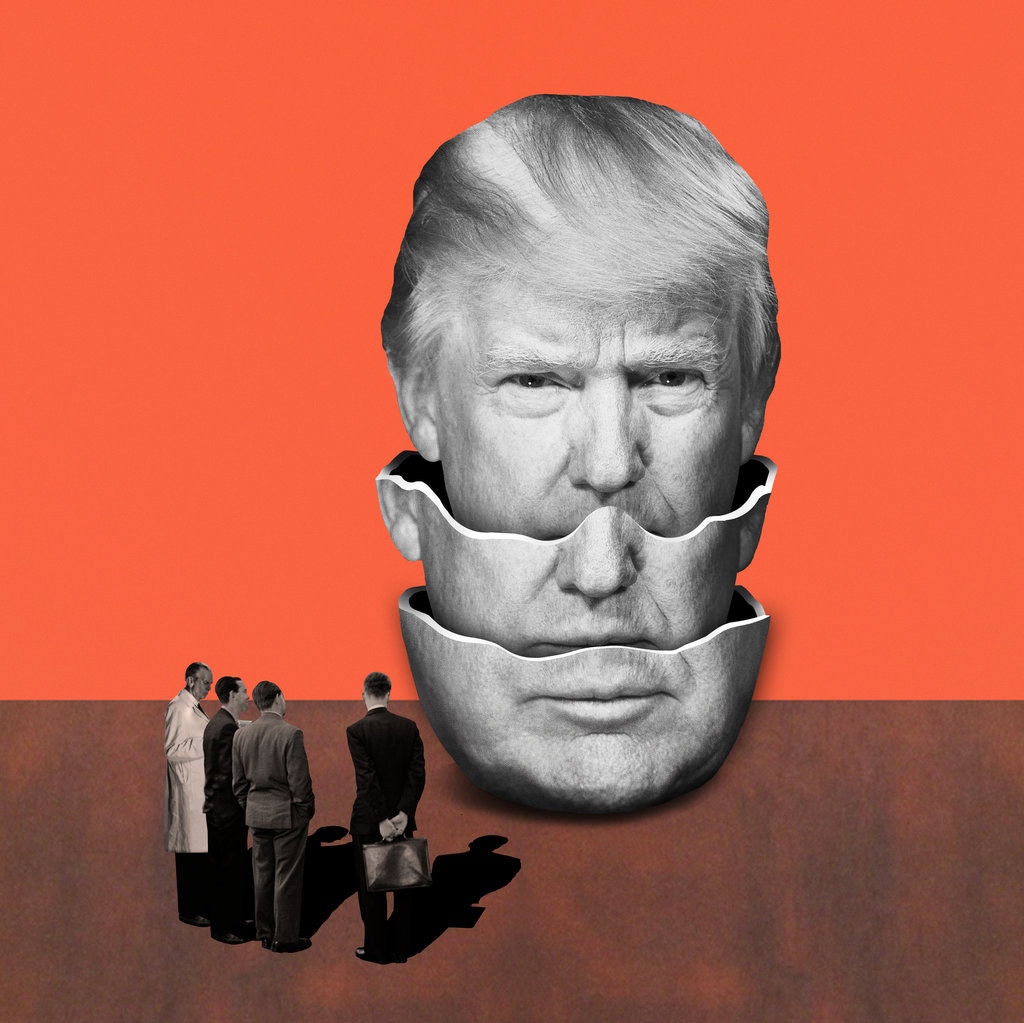
Matthieu Bourel is a french artist whose work is based on the power of images and the diversion of a wide range of visual combination.
He defines his work as ‘data-ism’, and when mixing elements, he often seeks to evoke a story that, although absent from the known reality, is powerfully present before the viewer and inspires ‘nostalgia for a period in time that never truly existed’.
(Matthieu Bourel: Collage and the power of images – The re:art, 2020)
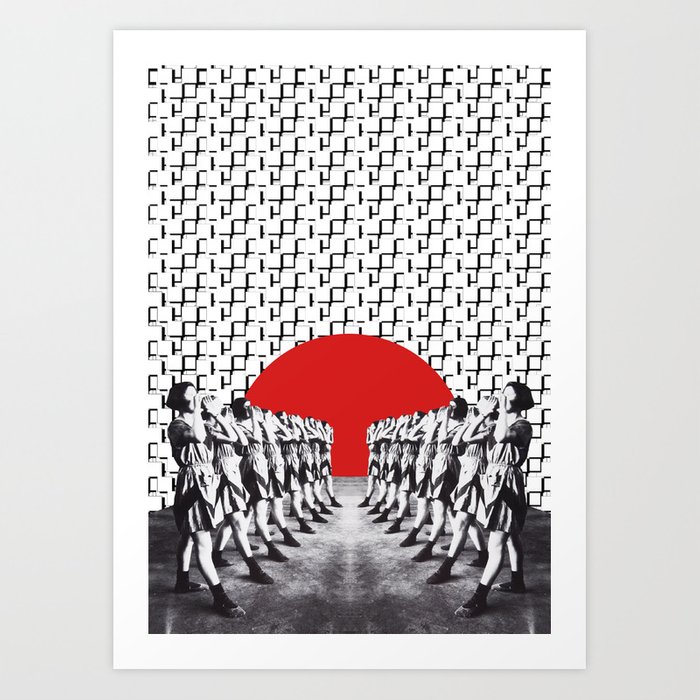
Sources
Alexander Ecob, “Brothers in arts”, eyemagazine.com, 26.09.2011, http://www.eyemagazine.com/blog/post/brothers-in-arts;
Friedman, R., Opinion | Is It Time To Call Trump Mentally Ill?. [online] Nytimes.com., 2007 <https://www.nytimes.com/2017/02/17/opinion/is-it-time-to-call-trump-mentally-ill.html?smid=pi-nytimes&smtyp=cur&fbclid=IwAR16g53o0fLFkrcyFCyyF0lLHEhJlLKBck0M0o1diBGwkOWquzMkkSDmw6s>;
Hanna Murauskaya, Translated from French by Lucy Pons, “Varvara Stepanova”, awarewomenartist.com, https://awarewomenartists.com/en/artiste/varvara-stepanova/;
Justin Wolf, “El Lissitzky Artist Overview and Analysis”, theartstory.org, 18.12.2016, https://www.theartstory.org/artist/lissitzky-el/?fbclid=IwAR3VgdZKkWWNBph9ZHKHZNtgwmRvEJHv35lz7r4FLATQWCTCA68irCtek5k;
Lissitzky, E., n.d. El Lissitzky Artworks & Famous Paintings. [online] The Art Story. Available at: <https://www.theartstory.org/artist/lissitzky-el/artworks/>;
Rawsthorn, A., . The Enduring Legacy Of Soviet Constructionism. [online] Nytimes.com. 2009, <https://www.nytimes.com/2009/02/06/arts/06iht-design9.1.19991303.html>;
Ross Wolfe, “Gustav Klutsis, revolutionary propagandist (1895-1938)”, The Charnel-House, 12.09.2016, https://thecharnelhouse.org/2016/10/12/gustav-klutsis-revolutionary-propagandist-1895-1938/?fbclid=IwAR0ZiEmhV4j-5wa1RuFZUS2MGQZ-8b6Glt6_KG99dFQM2P4vmrBMt64eWxA;
The re:art, Matthieu Bourel: Collage And The Power Of Images – The Re:Art. [online] <http://thereart.ro/matthieu-bourel-works/>;
Tracee Ng, “Constructivism Movement Overview and Analysis”, theartstory.org, 21.01.2012 https://www.theartstory.org/movement/constructivism/?fbclid=IwAR1iCs-etJ8Ijb7vaeoevgQ4oBZn5Y0yeEch7N19koPUmNMsm-p4cTkVJG8.
Images:
Figure 1. Lissitzky, E., n.d. El Lissitzky Artworks & Famous Paintings. [online] The Art Story. Available at: <https://www.theartstory.org/artist/lissitzky-el/artworks/>;
Figure 2. Lissitzky, E., n.d. El Lissitzky Artworks & Famous Paintings. [online] The Art Story. Available at: <https://www.theartstory.org/artist/lissitzky-el/artworks/>;
Figure 3. Lissitzky, E., n.d. El Lissitzky Artworks & Famous Paintings. [online] The Art Story. Available at: <https://www.theartstory.org/artist/lissitzky-el/artworks/>;
Figure 4. https://www.moma.org/collection/works/7269;
Figure 5. https://www.moma.org/collection/works/6599;
Figure 6. https://www.moma.org/collection/works/79700?sov_referrer=artist&artist_id=5643&page=1;
Figure 7. Hanna Murauskaya, Translated from French by Lucy Pons, “Varvara Stepanova”, awarewomenartist.com, https://awarewomenartists.com/en/artiste/varvara-stepanova/;
Figure 8. Ross Wolfe, “Gustav Klutsis, revolutionary propagandist (1895-1938)”, The Charnel-House, 12.09.2016, https://thecharnelhouse.org/2016/10/12/gustav-klutsis-revolutionary-propagandist-1895-1938/?fbclid=IwAR0ZiEmhV4j-5wa1RuFZUS2MGQZ-8b6Glt6_KG99dFQM2P4vmrBMt64eWxA;
Figure 9. Ross Wolfe, “Gustav Klutsis, revolutionary propagandist (1895-1938)”, The Charnel-House, 12.09.2016, https://thecharnelhouse.org/2016/10/12/gustav-klutsis-revolutionary-propagandist-1895-1938/?fbclid=IwAR0ZiEmhV4j-5wa1RuFZUS2MGQZ-8b6Glt6_KG99dFQM2P4vmrBMt64eWxA;
Figure 10. Alexander Ecob, “Brothers in arts”, eyemagazine.com, 26.09.2011, http://www.eyemagazine.com/blog/post/brothers-in-arts;
Figure 11. Alexander Ecob, “Brothers in arts”, eyemagazine.com, 26.09.2011, http://www.eyemagazine.com/blog/post/brothers-in-arts;
Figure 12. Alexander Ecob, “Brothers in arts”, eyemagazine.com, 26.09.2011, http://www.eyemagazine.com/blog/post/brothers-in-arts;
Figure 13. Friedman, R., Opinion | Is It Time To Call Trump Mentally Ill?. [online] Nytimes.com., 2007 <https://www.nytimes.com/2017/02/17/opinion/is-it-time-to-call-trump-mentally-ill.html?smid=pi-nytimes&smtyp=cur&fbclid=IwAR16g53o0fLFkrcyFCyyF0lLHEhJlLKBck0M0o1diBGwkOWquzMkkSDmw6s>;
Figure 14. https://society6.com/product/feminism-2014_print?utm_source=Pinterest&utm_medium=Social#1=45.
